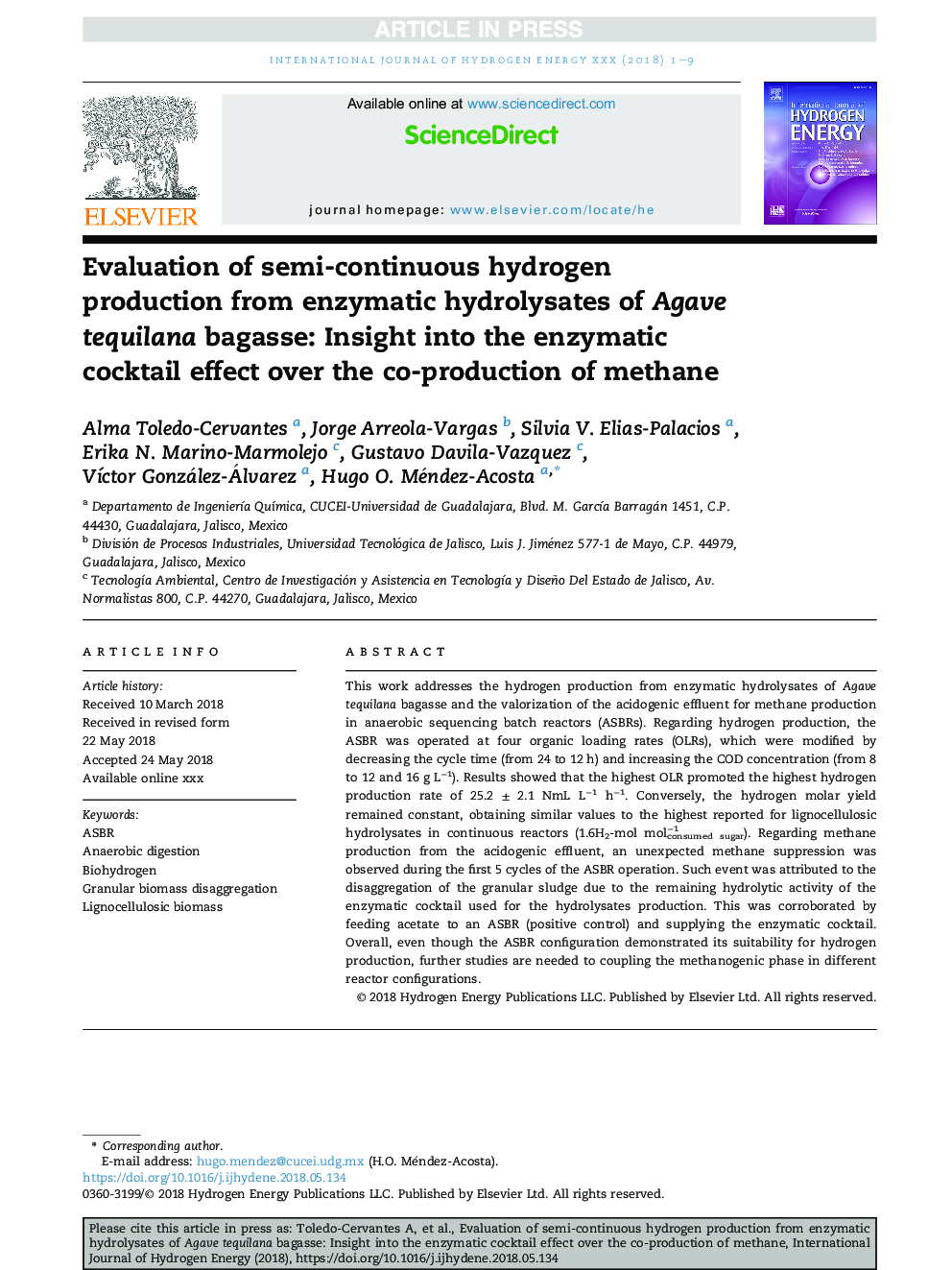| Article ID | Journal | Published Year | Pages | File Type |
|---|---|---|---|---|
| 7705278 | International Journal of Hydrogen Energy | 2018 | 9 Pages |
Abstract
This work addresses the hydrogen production from enzymatic hydrolysates of Agave tequilana bagasse and the valorization of the acidogenic effluent for methane production in anaerobic sequencing batch reactors (ASBRs). Regarding hydrogen production, the ASBR was operated at four organic loading rates (OLRs), which were modified by decreasing the cycle time (from 24 to 12 h) and increasing the COD concentration (from 8 to 12 and 16 g Lâ1). Results showed that the highest OLR promoted the highest hydrogen production rate of 25.2 ± 2.1 NmL Lâ1 hâ1. Conversely, the hydrogen molar yield remained constant, obtaining similar values to the highest reported for lignocellulosic hydrolysates in continuous reactors (1.6H2-mol molconsumed sugarâ1). Regarding methane production from the acidogenic effluent, an unexpected methane suppression was observed during the first 5 cycles of the ASBR operation. Such event was attributed to the disaggregation of the granular sludge due to the remaining hydrolytic activity of the enzymatic cocktail used for the hydrolysates production. This was corroborated by feeding acetate to an ASBR (positive control) and supplying the enzymatic cocktail. Overall, even though the ASBR configuration demonstrated its suitability for hydrogen production, further studies are needed to coupling the methanogenic phase in different reactor configurations.
Related Topics
Physical Sciences and Engineering
Chemistry
Electrochemistry
Authors
Alma Toledo-Cervantes, Jorge Arreola-Vargas, Silvia V. Elias-Palacios, Erika N. Marino-Marmolejo, Gustavo Davila-Vazquez, VÃctor González-Álvarez, Hugo O. Méndez-Acosta,
